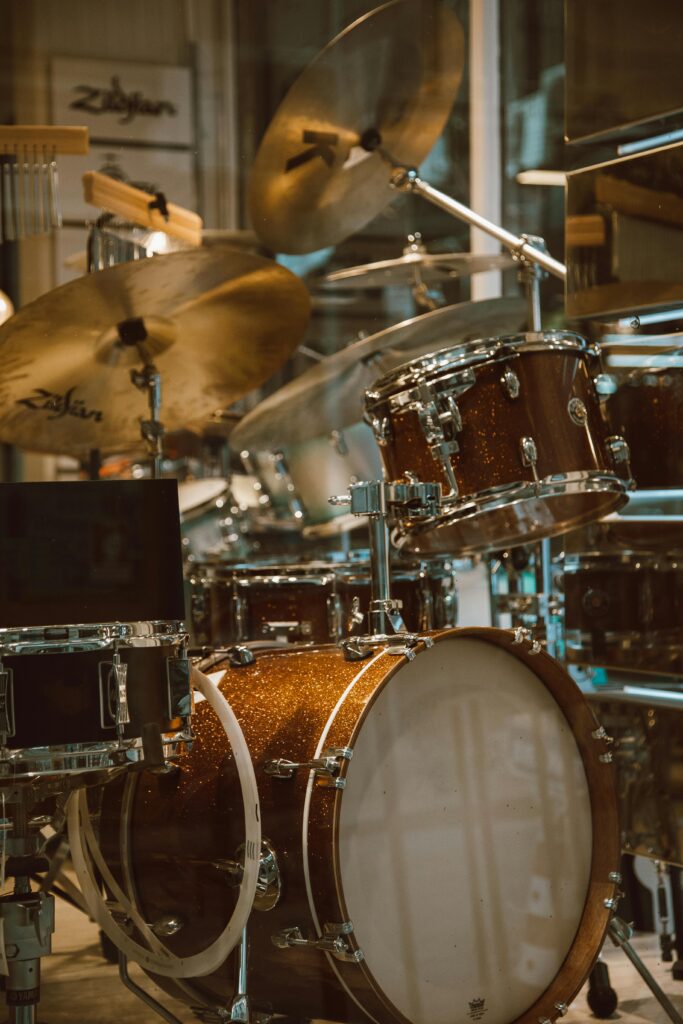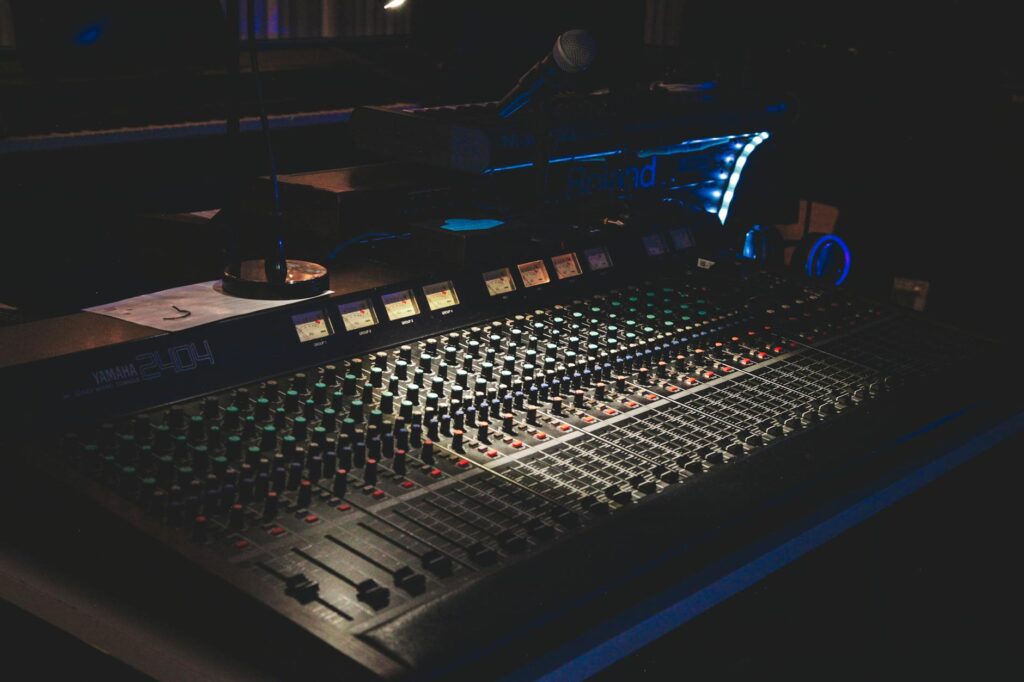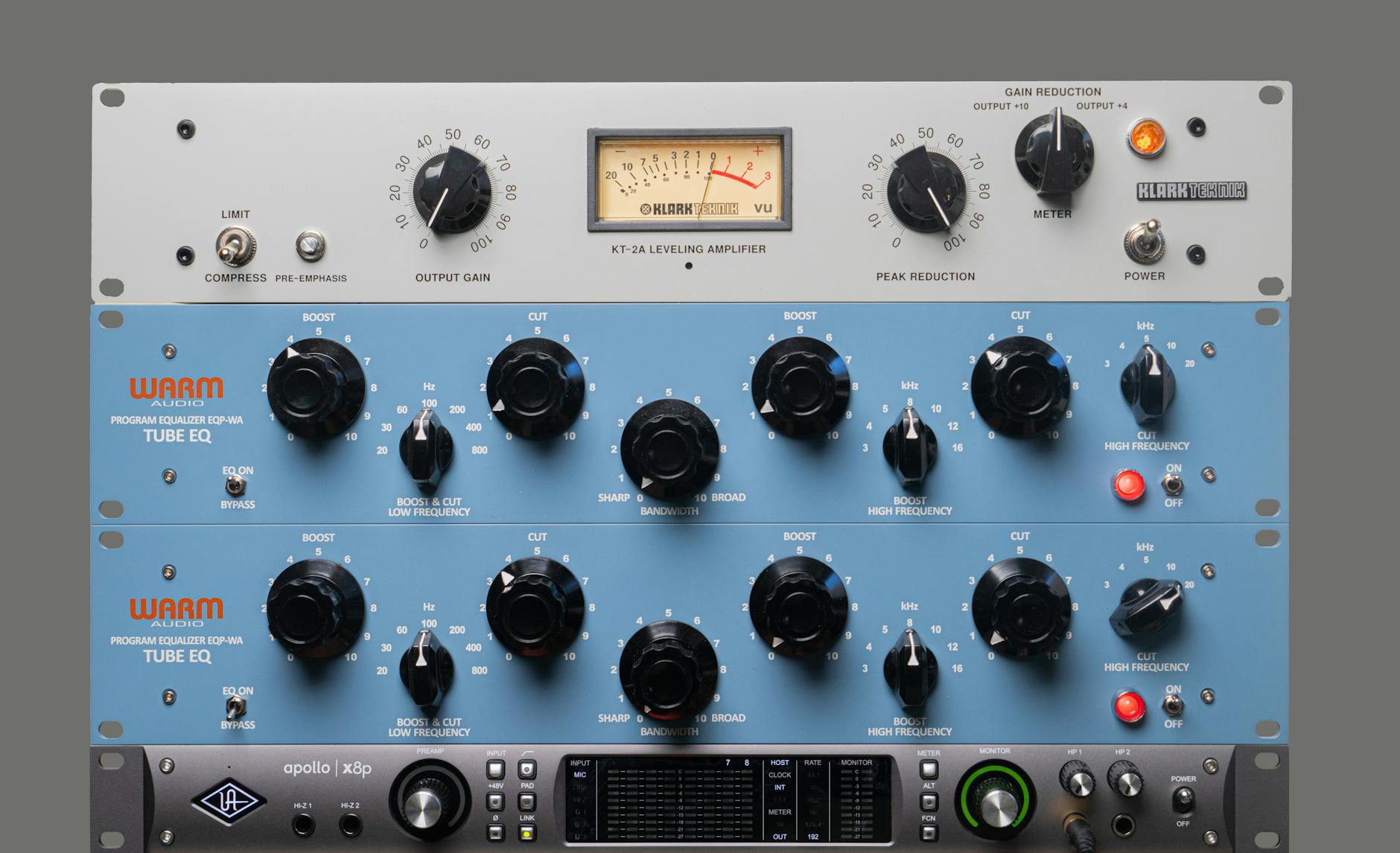Introduction To how to mix music For Worship
Mixing for a church or worship event is a unique and rewarding experience. As an audio engineer, you should know how to mix music for worship and add it to your skillset. You control the sound in the room and online, with the power to shape how people experience God. Whether in church or outside of church, your decisions can create a profound spiritual impact—or cause distractions. It’s a responsibility unlike any other, as music plays a crucial role in our spiritual lives. It can heal, inspire, and change the atmosphere around us.

Music is often used therapeutically to improve mental and physical well-being, as noted in an article titled “Music as a Blend of Spirituality, Culture, and Mind-Mollifying Drug.”
Music is a kind of therapy because it has the power to heal various problems like dementia, anxiety, trauma, depression, etc [17]. In many workshops of meditation, Music is an important part to stay positive and aware the people for their emotions….
Music as a blend of spirituality, culture, and mind mollifying drug
As an audio engineer in a church, you impact not only the audio but the spiritual, mental, and emotional well-being of your audience.
Mixing worship music presents distinct challenges compared to other live audio environments. Unlike concerts, worship services blend intimate moments, high-energy songs, spoken word, congregational singing, and featured performances—all requiring different mixing approaches. Many church engineers are volunteers with varying levels of experience and work with equipment ranging from basic to professional-grade. You must balance Front of House (FOH) for the congregation, monitors or Back of House (BOH) for the worship team, and online broadcasts for remote audiences.
This guide will walk you through a systematic approach to know how to mix music and spoken word that delivers professional results, no matter your church’s equipment or your experience level. You’ll learn:
- Master the fundamentals of church audio systems, signal flow, and proper gain structure
- Learn essential EQ, compression, and level balancing techniques specifically for worship instruments and vocals
- Implement advanced mixing strategies including bus processing and creating spatial depth for both in-room and broadcast audiences
- Troubleshoot common audio issues from feedback and room acoustics to equipment failures and performer-related challenges
- Apply professional polish through mix/master bus techniques and establish quality control processes for continuous improvement
Whether you’re mixing on a modest analog console or a high-end digital system, these principles will help you achieve professional results that serve both in-person and online congregations. Let’s start transforming your worship mixes and enhancing the worship experience.
How To Mix Music – Part 1: Foundation and Preparation

Understanding Your Churches Audio System:
First, Let’s begin with understanding your churches audio system. Whether small or megachurch, all worship spaces use audio systems serving three areas: FOH, BOH, and online broadcasts. Despite equipment variations, these core components remain consistent:
- Microphones: Dynamic mics (drums, amplified instruments), condensers (vocals, acoustic instruments), and wireless systems
- Direct Inputs: For instruments like bass, acoustic guitar, or keyboards
- Stage Boxes/Preamps: Where inputs connect and are gained to line level
- Mixer/Console/DAWs: The heart of your system, offering scene recalls and effects processing
- Processing Equipment: Compressors, EQs, and effects processors
- Amplification: Power amplifiers for speakers and monitors
- Speakers: Main PA, monitors, fills, and studio monitors
- Audio Distribution: Systems for recording, streaming, and multi-room routing
The first thing you need to do in knowing how to mix music, you need to document your specific setup, including model numbers and signal paths, to aid in training and troubleshooting.
Signal Flow Basics for Worship Environments:
Understanding signal flow in your specific worship context is crucial for effective troubleshooting and optimization. Keep a detailed log of your equipment, setup, and routing. The details will streamline your processes and show gaps. Here is what you should know for your signal flow:
- Input Stage: Signal from instruments/microphones through DI boxes, splitters, or preamps before reaching the console.
- As much as possible, keep everything 1-to-1. Meaning If your Kick is on the Preamp Channel 1, then put it on your consoles and DAW as Channel 1.
- Gain Structure: Proper gain staging starts at the preamp level. This is a critically important step in your process.
- The purpose of gain is very misunderstood. The purpose of gain is to bring a mic level signal up to Line Level. Gain DOES matter, but it’s not hard to if you know the purpose. If you want consistent gain structure and great mixes every time, then I encourage you to read my article Gain Structure: 6 Steps To Get The Best Results and download my free Gain Structure Guide. I promise you your mixes will change for the better by making this one simple change to your process.
- Processing Chain: High-pass filtering → EQ → Dynamics → Bus routing → Stereo Out
- Routing: Main mix, monitors, broadcast mix, lobby feeds, video production
- Output Stage: Distribution to speakers, recording devices, and streaming platforms
Draw or print a signal flow diagram specific to your church and keep it accessible at your mixing position for reference.
Testing PA Level
I wrote an article recently on “This Is How To Set Audio Levels For Live Sound” to make sure you are sending correct audio levels throughout your PA system. I would encourage you to read the whole article knowing how to mix music includes knowing how your PA is responding to your mix. Here are the main points:
- Choose your playback method: Either set up a virtual sound check or work with a live band.
- Prepare your system:
- Set speaker and console gain levels to 0dB (or manufacturer recommendations)
- Turn off all processing and routing
- Turn all faders down
- Set gain and levels with kick and vocals:
- Adjust input gain (kick at -6dB, vocals at -10dB peak)
- Bring kick fader to 0dB
- Adjust main fader until kick sounds appropriate
- Evaluate and adjust:
- If mains fader is below -5dB: system is too loud (adjust speakers down)
- If mains fader is above +5dB: system is too quiet (adjust speakers up)
- Ideal position: mains fader between -5dB and +5dB
- Fine-tune console output: Adjust output level so both kick and mains faders sit at 0dB.
- Add vocals: Bring in lead vocal, aiming for at least -10dB on the fader.
- Complete the mix: Add remaining instruments and processing, building around kick and vocals.
Following this method ensures your system operates at optimal levels, delivering clean sound with maximum headroom. Remember, the goal isn’t just making things loud—it’s creating the perfect balance where your equipment performs at its best and your mix sounds professional.
Pre-Mixing Essentials

Part of knowing how to mix music is to develop a consistent, efficient sound check routine that respects everyone’s time while ensuring quality. Talk with your worship leader and team to establish expectations and what is realistic including when musicians should arrive and how long sound check and rehearsals are, keep these phases in mind:
Sound Check Routine
- Preparation: Arrive 30-60 minutes early, test systems, prepare templates
- Line Check: Test inputs individually, starting with rhythm section
- Rehearsal: Run through song sections, balance mixes, verify monitor levels
- Final Check: Test pastor mics, announcement videos, and streaming outputs
Use Templates for Consistency
Documenting your signal flow, inputs, and possible locations for each instrument will prepare you and your team for potential adjustments. Creating a standard workflow will create consistency in your processes and mixes:
- Create channel/scene templates for common service types
- Maintain clear labeling and color-coding across templates
- Develop protocols for modifications and updates
- Keep backups in cloud storage and on physical media
Communication Protocols with Worship Team Members
Effective communication is essential for successful worship audio. It should be everyone’s job to build relationships and foster a culture of collaboration:
- Establish clear signals for monitor adjustments
- Implement talkback systems for mid-service communication
- Develop rapport with your musicians for better collaboration
- Provide basic audio training for worship team members
By establishing these foundational elements, you create a technical and relational framework that supports excellent worship audio and reduces stress for everyone involved. With these essentials in place, let’s talk about Core Mixing Techniques.
how to mix music – Part 2: Core Mixing Techniques for Worship
In my Baseline Series I go over each instrument and developing baseline settings that you can use with your console or DAW templates. My baseline series is designed to cut through the noise for you so you can create amazing mixes. As you are learning how to mix music, the baseline series should be part of your core techniques. These techniques include:
Prioritize Clarity
- In church services, the spoken word and lead vocalists take priority and should be clearly heard. Not obnoxiously loud, but they should be heard.
- Make sure your system is in stereo and you utilize the stereo field to clear up the middle for vocal and the rhythm section
- Utilize a Band, Vocal, and Preacher busses so you can bring the volume of the whole band down if they are too loud.
EQ Strategies For Worship Instruments

- Each instrument is unique in how they fit within the frequency spectrum
- Look to boost frequencies instead of cutting
- Boost frequencies to enhance the tone and Cut to clean up
- Frequency Concepts
- 250Hz and Below = Weight, Impact, and Fundamental
- 250Hz to 2K = Magic Frequencies, Brings forward or Moves back in the mix
- 2K to 6K = Provides clarity but can be painful to listen
- 6K and Above = Airy and Stereo spread
Compression and Dynamics For Worship
- Setup Threshold after setting gain and save as template to have consistent gain structure
- Heavy, Fast, and/or Hard Knee settings to add saturation
- Light, Slow, and/or Soft Knee settings for more natural sound
- Only add Make-Up Gain if necessary
- Toggle the compressor On/Off
- If there is a noticeable difference, then adjust make-up gain to compensate
Level Balancing
- After testing your PA levels, you should be in a good place to balance your mix.
- Try to mix with faders as close to 0dB as possible
- Have you band, vocals, and preachers on separate busses to have maximum flexibility in adjustments
how to mix music – Part 3: Advanced Techniques
After mastering the fundamentals of of how to mix music for church settings, it’s time to elevate your mixing with more advanced techniques. These techniques help create professional-quality sound that enhances the worship experience without becoming a distraction. These methods build upon your solid foundation to create mixes with greater depth, cohesion, and emotional impact—serving both in-person and online congregations effectively. While these techniques don’t require a lot of expertise to setup, it may take some time to master each element. These techniques can be applied to systems of any size or budget when approached systematically. The following advanced strategies will help you create mixes that not only sound professional but also support the spiritual purpose of worship music.
Bus Processing for simplified workflow
- Read my article on 5 Reasons Why You Need To Use Bus Processing on how to utilize bus processing in your mixes
- This helps to limit the amount of channels you need to pay attention to during a service, streamlining your approach
Creating depth in worship mixes
- Effective use of reverb and delay for worship settings
- Try to only use a drum and a vocal reverb
- Try to use a short and a long delay for vocals
- Building a cohesive spatial environment with hard panning and stage placements
Dual-purpose mixing (in-room and broadcast)
- Mix with headphones to mix for in-person and online audiences together
- EQ the room on the final Mains or Matrix bus
- Add Mastering compression for consistent mixing for in-person and online audiences
Automating transitions between worship segments
- Create DCA’s for every transitional element in one bank within a service
how to mix music – Part 4: Troubleshooting Common Issues
Even with careful preparation and skilled mixing, technical challenges inevitably arise in worship environments. Knowing how to mix music when things don’t go right separates the novice and experience engineers. The acoustic properties of worship spaces can present significant issues while mixing. Additionally, the volunteer-driven nature of many worship teams means dealing with varying levels of technical awareness and microphone technique. This section addresses the most frequent audio problems encountered in worship settings and provides practical solutions that can be implemented quickly, often mid-service. Developing these troubleshooting skills will help you maintain focus on worship rather than technical distractions, regardless of your room’s acoustic challenges.
Room-Related Issues
- Feedback Management
- Have the PA Speakers slightly forward or parallel to the most forward microphone location on stage
- Coach individuals to keep the microphone close to their mouth
- If you notice a common frequency that want’s to feedback, then adjust the EQ in the PA or in a Matrix feeding the PA to cut that frequency instead of adjusting each channel
- Dealing with challenging acoustics in church buildings
- Mix with headphones to know what the mix actually sounds like
- Adjust EQ in the Matrix channel to adjust for the room or adjust the PA speakers if they have an EQ
- “Congregation Can’t Hear” Scenarios
- Preacher inputs or busses sent directly to Mains
- Setup a Band Bus, Vocal Bus, and Mix Bus to adjust the band volume compared to preachers
- Ineligibility is around 4.5k
Equipment-Related Issues
- Wireless System Issues
- Note if a frequency is giving you issues and change if necessary
- Adjust the microphone output volume to hit no louder than -6dB on the wireless system
- Electrical Power Issues
- Have your mixing console or DAW on a separate power line than other equipment
- Make sure your musical equipment are properly grounded
- Equipment Failure Contingencies
- Have backups for every primary gear
- Have extra cables for musicians
People and Performance Issues
- Microphone Selection and Placement Troubleshooting
- Coach singers and preachers about mic placement
- Adjust microphone positions on guitar amps during soundcheck if possible
- Have a backup microphone ready if one fails
- Monitor Mix Problems
- Resolving “more me” requests, which means adjusting your gain. Never go above -6dB from the input channel
- Coach musician or singer on level balancing and panning techniques
- Quick adjustments for vocalists who can’t hear pitch references
how to mix music – Part 5: Final Polish and Professional Results
The difference between a good worship mix and an exceptional one often lies in the final touches. The mastering elements will elevate your worship audio to a professional standard. This final stage focuses on cohesion, consistency, and subtle enhancements that may seem minor individually but collectively transform your mix. These polishing techniques help create a seamless worship experience where technical elements support rather than distract from spiritual moments. They also provide the quality and consistency expected in both in-person and online environments, ensuring your message reaches everyone with clarity and impact. The following strategies will help you add that professional finish to your worship mixes.
Mix and Master Bus Techniques
- Consider using a Mix Bus for the band and the Main/Stereo Out as your Mastering Bus
- Mix Bus for Glue Compression, EQ enhancements and saturation
- Master Bus for stereo width, EQ exciter, and limiting
- Set your Mix Bus Compressor and Mastering Limiter and mix into it from the start. So you can achieve the right balance and loudness for your mixes.
- Set Mix Bus Compressor settings at -13dB Threshold and have 1-3 dB reduction
- Set Limiter to -0.6 dB limit with 3 dB of Make-Up gain.
Quality Assurance Checks
- Check audio for every transitional piece
- Fix any issues you encountered during rehearsal
- Check in with the band and speakers if they need anything
Recording and Reviewing for Continuous improvement
- Capture a multitrack recording of your worship service
- If you can, try to record a master print of your mix so you can hear the choices you made during the service
- Note what worked and what did not
- Ask your team what they felt worked or not
- Make adjustments as needed
Practical Steps To how to mix music
One of the most overlooked aspects of learning how to mix music is to be part of the experience and feel the music. An audio engineer is a musician. The only thing that separates each musician is the tools they are using. Your tool is the mixing console. You should learn every song that is being played and understand the purpose of the song. An audio engineer is an important element of the song that can bring the audience into a unique and authentic experience. Yes, our job is very technical, but don’t forget to experience the music as well.
Here are 10 actionable steps you can take from this article:
- Document their audio system setup including model numbers, signal paths, and channel assignments to make troubleshooting easier and create consistent workflows.
- Set up proper gain structure by adjusting input gain (kick at -6dB, vocals at -10dB peak) and configuring the PA system with faders in the optimal -5dB to +5dB range.
- Create mixing templates with standardized bus routing (Band, Vocals, and Preacher busses) and consistent channel assignments to streamline workflow across services.
- Implement and standardize the processing chain order for all your consoles and DAW for consistency
- Use bus processing to manage complex mixes more efficiently, allowing quick adjustments to entire instrument groups rather than individual channels.
- Mix with headphones to better understand how the mix sounds without room acoustics affecting perception, especially helpful for broadcast mixes.
- Set up strategic DCA assignments for transitional elements to make service flow smoother between different segments.
- Create a comprehensive sound check routine with clear preparation, line check, rehearsal, and final check phases to respect everyone’s time.
- Implement quality assurance checks before services by testing every transitional piece and addressing issues discovered during rehearsal.
- Record services and review them afterward to identify what worked and what didn’t, creating a feedback loop for continuous improvement
Ready to Transform Your Worship Audio Experience?
What you’ve read today is just the beginning. If you want to take your worship mixing skills to the next level and create truly professional sound that enhances the spiritual experience of your congregation, I’m here to help.
Sign up below for my weekly newsletter and receive:
- Step-by-step mixing tutorials specifically designed for worship environments
- A free copy of my Gain Structure Guide that will immediately improve your mixes
- Future free downloadable products and templates
- Exclusive troubleshooting guides for common worship audio problems
- Early access to my upcoming courses and resources
Don’t let technical limitations stand between your congregation and a powerful worship experience.